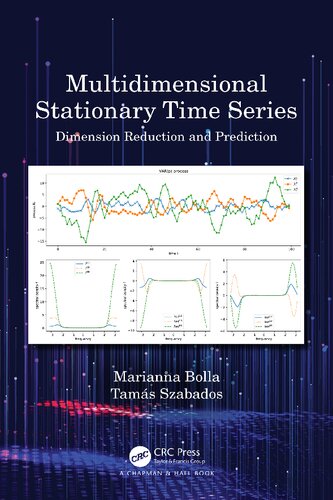

Most ebook files are in PDF format, so you can easily read them using various software such as Foxit Reader or directly on the Google Chrome browser.
Some ebook files are released by publishers in other formats such as .awz, .mobi, .epub, .fb2, etc. You may need to install specific software to read these formats on mobile/PC, such as Calibre.
Please read the tutorial at this link: https://ebookbell.com/faq
We offer FREE conversion to the popular formats you request; however, this may take some time. Therefore, right after payment, please email us, and we will try to provide the service as quickly as possible.
For some exceptional file formats or broken links (if any), please refrain from opening any disputes. Instead, email us first, and we will try to assist within a maximum of 6 hours.
EbookBell Team

5.0
70 reviewsThis book gives a brief survey of the theory of multidimensional (multivariate), weakly stationary time series, with emphasis on dimension reduction and prediction. Understanding the covered material requires a certain mathematical maturity, a degree of knowledge in probability theory, linear algebra, and also in real, complex and functional analysis. For this, the cited literature and the Appendix contain all necessary material. The main tools of the book include harmonic analysis, some abstract algebra, and state space methods: linear time-invariant filters, factorization of rational spectral densities, and methods that reduce the rank of the spectral density matrix.
* Serves to find analogies between classical results (Cramer, Wold, Kolmogorov, Wiener, Kálmán, Rozanov) and up-to-date methods for dimension reduction in multidimensional time series.
* Provides a unified treatment for time and frequency domain inferences by using machinery of complex and harmonic analysis, spectral and Smith--McMillan decompositions. Establishes analogies between the time and frequency domain notions and calculations.
* Discusses the Wold's decomposition and the Kolmogorov's classification together, by distinguishing between different types of singularities. Understanding the remote past helps us to characterize the ideal situation where there is a regular part at present. Examples and constructions are also given.
* Establishes a common outline structure for the state space models, prediction, and innovation algorithms with unified notions and principles, which is applicable to real-life high frequency time series.
It is an ideal companion for graduate students studying the theory of multivariate time series and researchers working in this field.